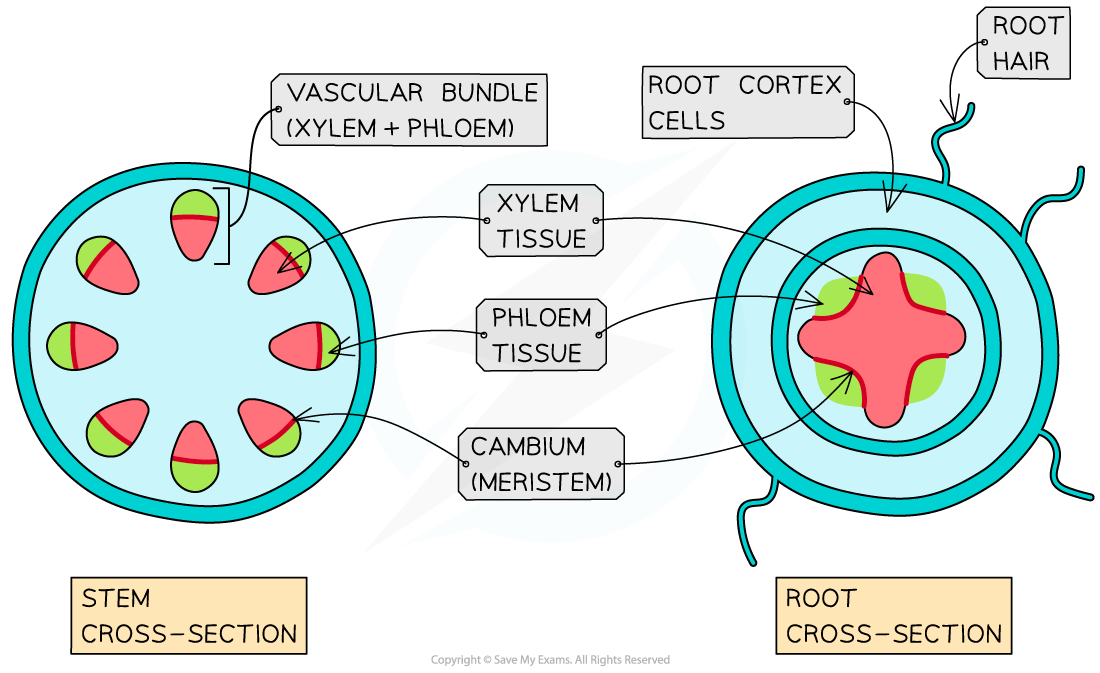B2
1/33
Earn XP
Description and Tags
transport
Name | Mastery | Learn | Test | Matching | Spaced |
|---|
No study sessions yet.
34 Terms
unicellular transport
relies on diffusion
O2/glucose in, CO2/H2O out
multicellular transport
too many cells for diffusion to supply them all in time
exchange surfaces allow substances in/out of transport system
surface area to volume ratio
the larger an organism, the smaller a ratio
as there isn’t enough exchange surface for diffusion, the cells in the center don’t get the resources they need in time.
SA : V ratio calculation
surface area / volume : 1
role of the alveoli
to support gas exchange between alveoli and capillaries
adaptations of the alveoli
circular shape which allows for larger surface area for exchange
high concentration of oxygen vs low concentration in the blood stream
thin membrane(1 cell think) to shorten diffusion distance
moist to dissolve gases & avoid air bubbles in blood stream
network of capillaries around alveoli to maximize gas exchange
adaptations of the villi
thin 1 cell thick walls in a single flat layer for short diffusion distance
finger-like projections to increase surface area & allow for regular stacking
large quantity of villi in a very long intestine
large quantity of blood in vessels for nutrients to diffuse into
diffusion
the random movement of particles from a high concentration to a lower concentration
moves down the concentration gradient as it is passive
concentration gradient
difference in concentration between 2 areas
a steeper gradient means faster diffusion
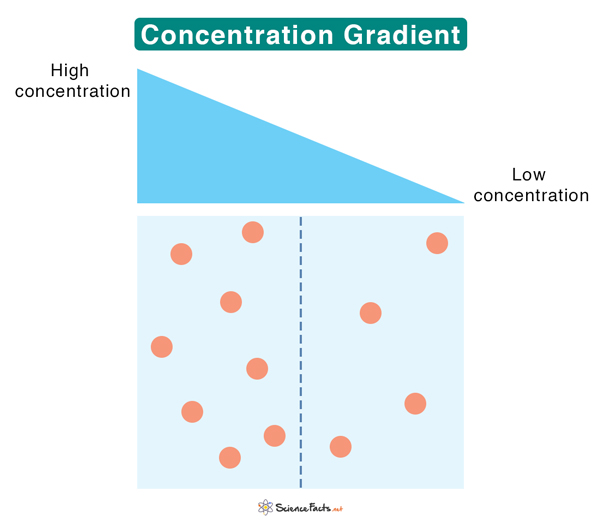
factors that may affect gradient of diffusion
concentration gradient
temperature
diffusion distance
active transport
the movement of molecules from an area of low concentration to an area of higher concentration
goes up the concentration gradient(natural flow) as it goes against it
carrier proteins
required to “scoop” the particle and pushes it to the other side
this is because energy is required to move the particles in active transport(atp)
carrier protein image
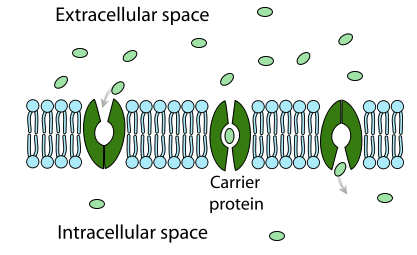
osmosis
the total movement of water molecules from an area of high water potential to an area of low water potential.
MUST go through a partially permeable membrane
water potential
the ability of water to freely move, measured in Psi (Ψ)
how water potential works
as particles move from a higher concentration to a lower concentration, it eventually leads to equilibrium on both sides of the permeable membrane
water potential in practice
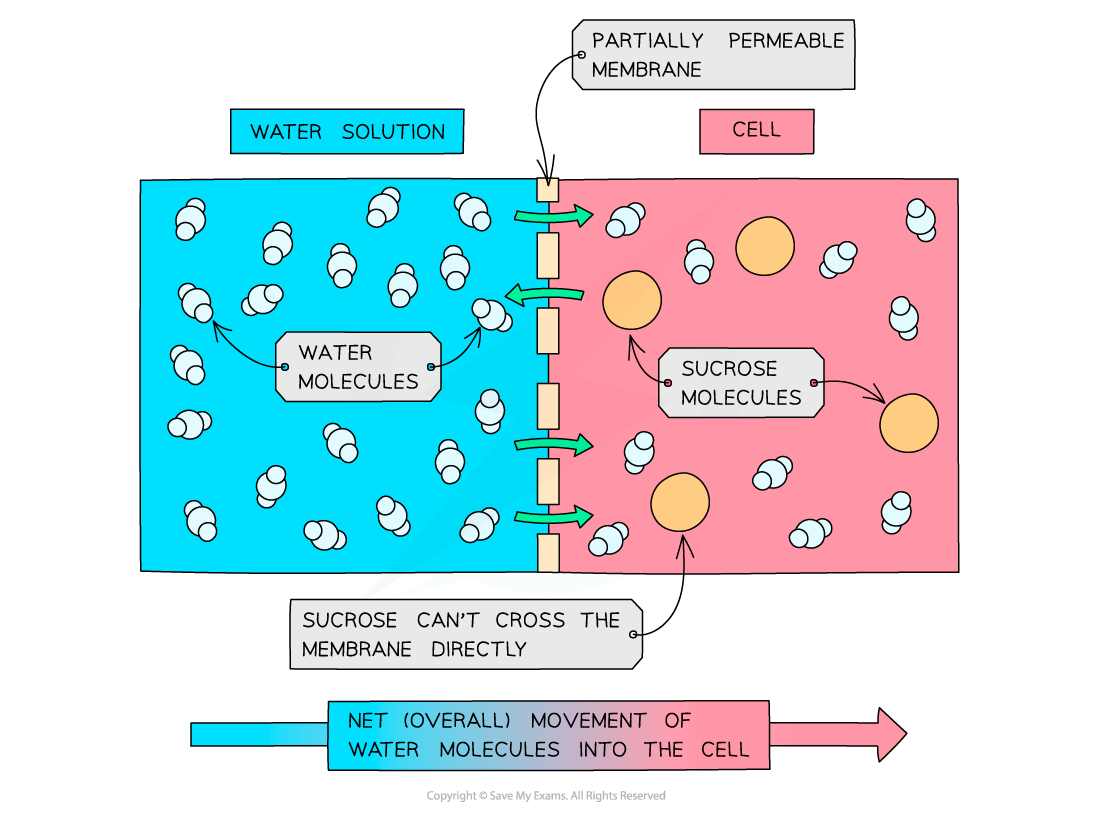
RBC placed in distilled water
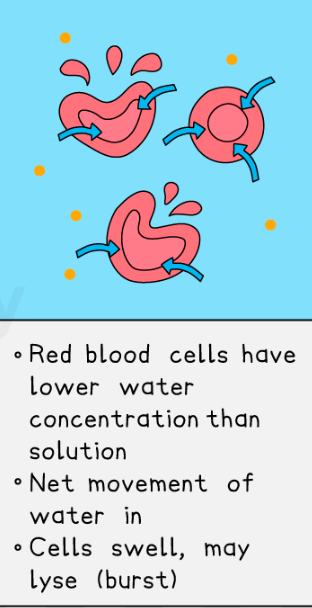
RBC placed in concentration solution(salt/sugar)
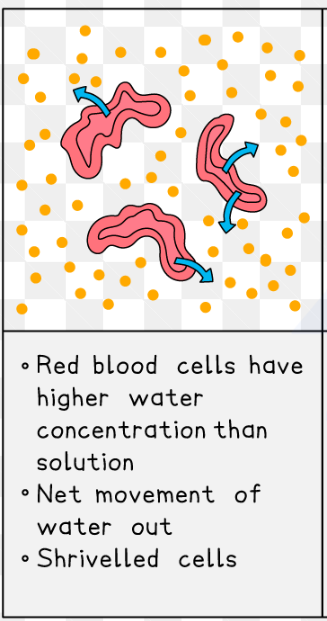
double circulatory system
a system of blood circulation where blood passes through the heart twice in one complete circuit of the body.
role of the circulatory system
the heart pumps oxygenated blood to cells deliver O2 and glucose
the heart pumps deoxygenated blood to lungs to remove CO2 and H2O
arteries
carries blood away from the heart
thick muscle walls to withstand high pressure of blood
small lumen(hole) to maintain pressure(smaller area)
high pressure from heart compressions
veins
carry blood to the heart
thin muscle walls as blood is at low pressure
valves to prevent backflow of blood
large lumen to reduce resistance to flow
capillaries
connects arteries & veins
walls are 1 cell thick(short diffusion distance)
where gases are exchanged with cells
pressure from heart contractions force capillary substances out
Pulmonary
anything related to the lungs
root hair cells
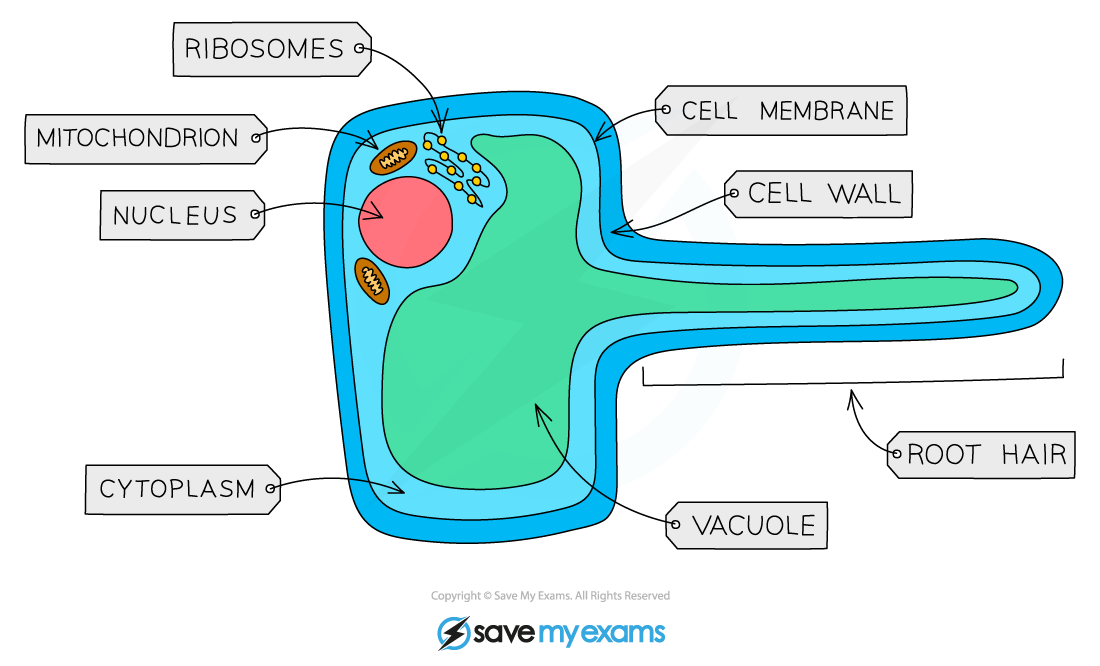
adaptations of a root hair cell
long & thin protrusions to fit between soil particles
large surface area for uptake of minerals & water
lots of mitochondria(atp) for active transport
vacuole containing sap to lower water potential
how a root hair cell works
active transport of mineral ions requires energy as it is active transport (less mineral on outside than inside)
water potential is lowered on the inside so that water can go in through osmosis
xylem
transports water & minerals from roots to the rest of the plant
phloem
transports dissolved sugars(assimilates) from photosynthesis to the rest of the plant
aka translocation
vascular bundle
Bundle of xylem & phloem within the plant
different distribution in roots & system
supports the plant in the stem
anchors the plant in the roots
adaptations of xylem
made of dead cells
flows upward
impermeable cell wall
thick cell wall made of lignin
provides support
adaptations of phloem
made of living cells
flow is up & down
sieve plates present at the end of cells to allow dissolved sugars to pass through
thin cell wall made of cellulose
transport system cross section
phloem is packed in regular shape(more dense)
xylem is less dense, usually darker in color on test papers
